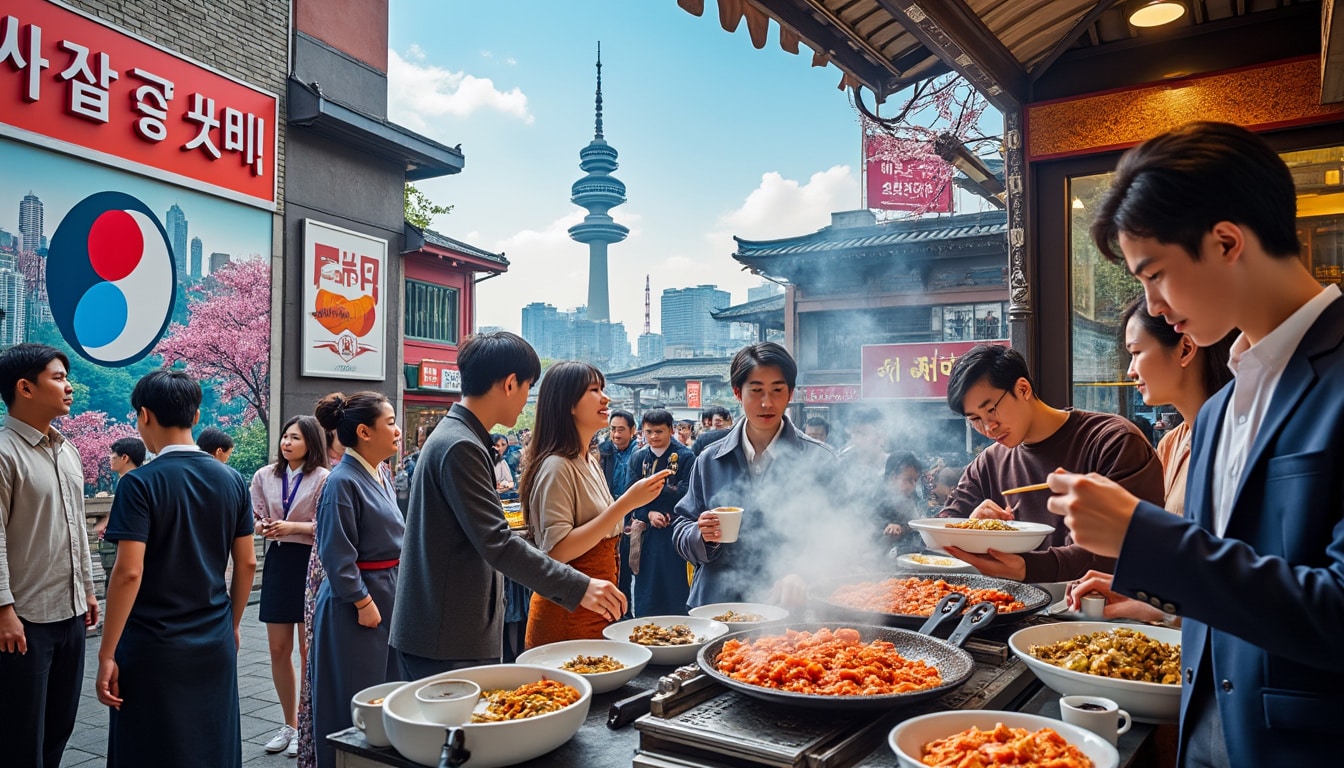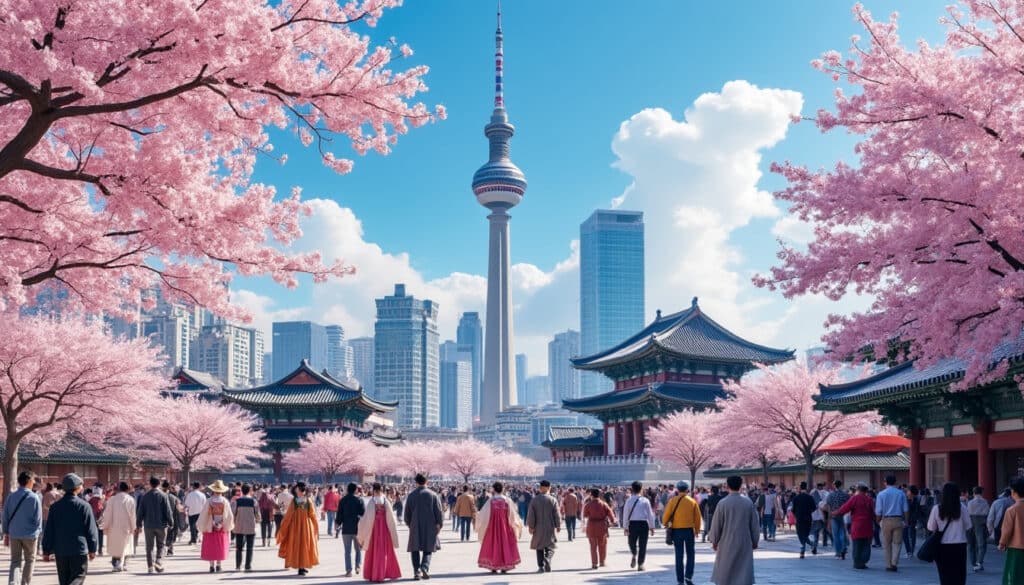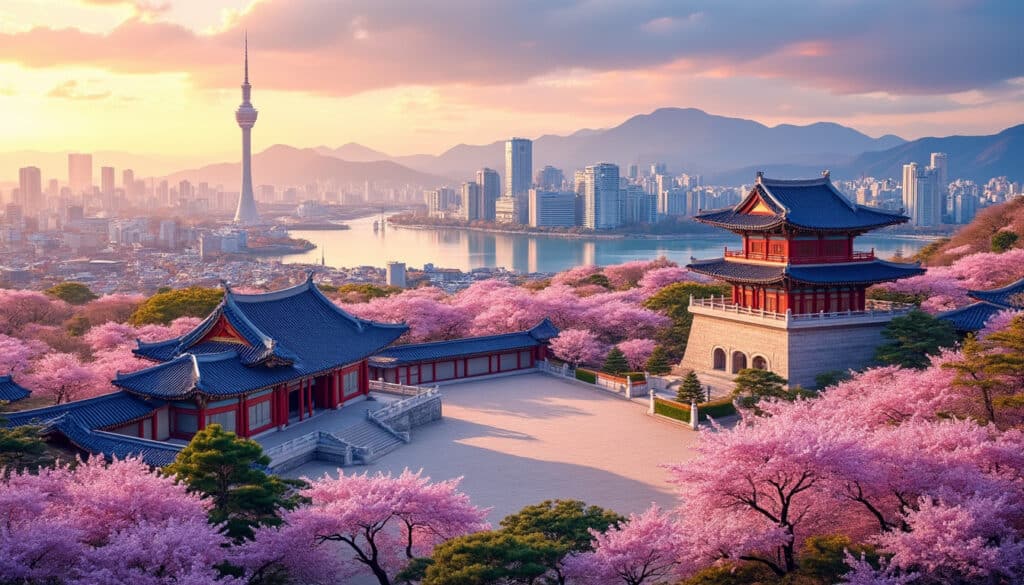Seoul, the bustling capital city of South Korea, is not just a hub of rapid technological advancements and modern culture, but also a treasure trove of linguistic history and evolution. The city’s language and spelling conventions offer a window into its rich past and dynamic present. From the prestigious Seoul dialect, which is the basis of the standardized Korean language, to the unique way Seoul is romanized in various languages, these aspects reflect the fascinating intricacies of a city deeply rooted in its cultural identity. This exploration also introduces us to the significance of Seoul Language Institute and how it aids in understanding these nuances.
The Evolution of the Seoul Dialect
The Seoul dialect, also known as the Gyeonggi dialect, is more than just a regional vernacular; it is the linguistic backbone of modern standard Korean. Predominantly spoken in the sprawling metropolitan area of Seoul, Incheon, and Gyeonggi Province, this dialect has shaped the phonetic and grammatical norms of contemporary Korean. Historically, the prestige associated with the Seoul dialect stems from its status as the dialect of Korea’s capital, often symbolizing sophistication and modernity.
Interestingly, the distinctiveness of the Seoul dialect can be traced back to medieval times. During the Joseon Dynasty, which began in 1392, Seoul was established as the capital, making it a political and cultural hub. Over the centuries, the dialect used by Seoul’s elite gradually became the standard for the entire nation. This evolution is captured in historical texts like the Samguk Yusa, which reference the linguistic characteristics of ancient Seoul, then known as Seorabeol.
However, the transition of the Seoul dialect into the modern standard language was also influenced by external forces, notably during the Japanese occupation of Korea in the early 20th century. It was during this period that efforts to unify and standardize the Korean language were made, incorporating many elements of the Seoul dialect due to its existing prestige.
Characteristics of the Seoul Dialect
The Seoul dialect is known for its clarity and neutrality, making it an ideal medium for official communication and media. Unlike other regional dialects in Korea, it features a relatively simplified vowel system and a particular intonation pattern, which many consider as refined and balanced. This dialect’s nuances are well represented in public broadcasts and educational programs, ensuring its continual influence on the Korean language.
Though the dialect is standardized, there are subtle differences in pronunciation and tone that can be observed, especially among native speakers. Formal situations often require a more polished version of the dialect, which is taught and reinforced in institutions such as the Seoul Language Institute, providing both native and international learners with crucial insights into the art of Seoul’s linguistic decorum.
- 📍Major Influence: The dialect has significantly influenced Korea’s linguistic landscape.
- 📍Cultural Importance: It symbolizes modernity and sophistication.
- 📍Educational Focus: Taught widely in schools and language institutions.
The Romanization of “Seoul”
The spelling of “Seoul” captures the convergence of linguistic heritage and modernization, particularly through the romanization practices over the years. Seen in various forms, from “Seoul” in English to “서울” in Korean, the word reflects both phonetic harmony and historical layers of interpretation. Initial attempts at romanization were primarily influenced by Western missionaries and scholars aiming to transcribe Korean sounds into the Latin alphabet seamlessly.
The most recent spelling reflects a systematic approach that considers both Korean phonetic rules and the global ease of pronunciation. This was officially adopted during the mid-20th century under the guidelines put forth by the South Korean government, culminating in what is known today as the Revised Romanization of Korean. In this system, the Korean syllable “서” is represented as “Seo,” and “울” as “ul,” together forming “Seoul.”
Challenges and Solutions in Romanization
One of the primary challenges in romanizing Korean is preserving the intrinsic phonetic characteristics of the language while making it accessible to an international audience. The revised romanization has addressed these issues by simplifying complex phonetic features through straightforward consonant-vowel representations. Despite this, some phonemes, like the Korean [ʌ], remain challenging to accurately depict, which sometimes results in varied pronunciations among non-native speakers.
Institutions like the Seoul Spelling Academy play an integral role in educating both locals and visitors on correct romanization. These facilities provide resources and guidance for understanding standardized spelling beyond simply phonetic rendering.
| Method | Notation | Examples |
|---|---|---|
| Revised Romanization | Seoul | 서울 (Seoul) |
| Yale Romanization | Sewul | 서울 (Sewul) |
| McCune–Reischauer | Sŏul | 서울 (Sŏul) |
Learning and Teaching Korean in Seoul
Seoul is home to several language institutions that cater to a diverse crowd of learners eager to master Korean. These institutions, such as the Seoul Language Services and the Seoul International Language Center, offer a range of programs designed to suit different proficiency levels and learning goals.
These centers focus not only on the linguistic components but also provide cultural immersion opportunities. The objective is to offer a holistic approach to learning, where students can gain both linguistic skills and an appreciation for Korean culture, which is vital given that language and cultural nuances are closely intertwined.
Popular Language Programs
The educational offer in Seoul is comprehensive, with diverse options for different audiences. Language programs are tailored for expatriates, international students, and business professionals who wish to engage with Korea’s dynamic cultural and economic environment. Here are some highlights:
- 🌐 Beginner Courses: Focus on Hangul (Korean alphabet) and basic vocabulary.
- 🌐 Intermediate Programs: Enhance grammar comprehension and conversation skills.
- 🌐 Advanced Classes: Specialized in professional or academic language use.
Moreover, places like the Seoul Tutoring Services provide personalized tutoring for individuals looking for a tailored learning experience. These services integrate technology, such as AI learning tools, to help students track their progress and refine their language skills in real time.
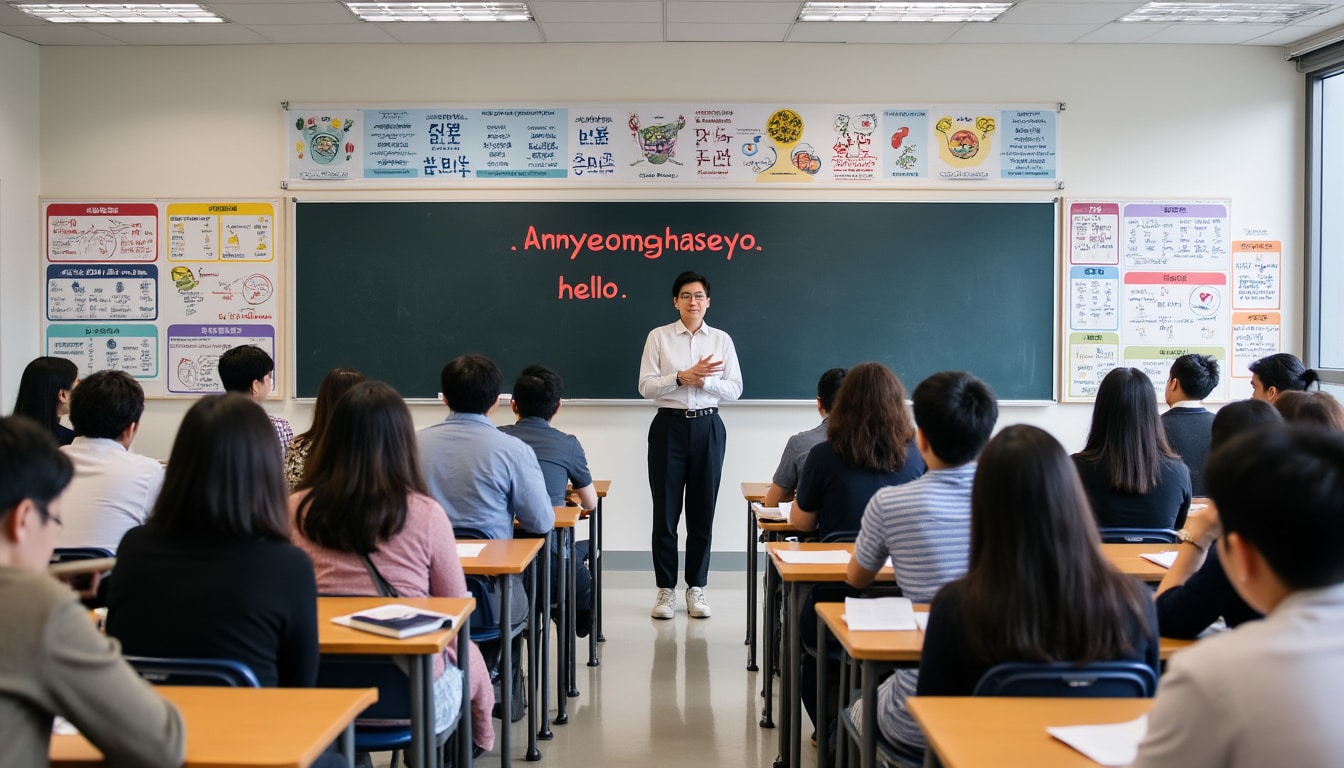
International Influence on Seoul’s Language Scene
Seoul’s position as a global city means it’s a melting pot of cultures and languages. The city’s openness to international influence has diversified its linguistic landscape, with English becoming increasingly prevalent. Institutions like Seoul English School have established themselves as key participants in facilitating English education, reflected in the growth of English-speaking communities within the city.
This international perspective has influenced everything from business communications to pop culture. Korean businesses frequently engage in the Seoul Language Exchange programs to expand their operations globally. These programs encourage language learning as a mutual exchange rather than a one-sided effort, fostering a multilingual environment that attracts people from around the globe.
Integration of English in Korean Society
The integration of English within Korean society is no superficial phenomenon. It’s echoed in the rising number of bilingual education plans and the presence of English in public signage, business, and entertainment. Some key points include:
- 🇬🇧 Business Communication: English is often the medium for inter-company interactions.
- 🇬🇧 Educational Systems: Many schools adopt bilingual curriculums.
- 🇬🇧 Pop Culture: English use in music, movies, and ads is prominent.
The Seoul Language Hub serves as an epicenter for fostering these bilingual exchanges, offering courses that encourage both Koreans and foreigners to learn from each other’s linguistic strengths.
Cultural Implications of Language and Spelling in Seoul
Language is an integral part of Seoul’s cultural identity, reflecting its history and societal evolution. The eclectic linguistic landscape serves as a mirror of its diverse populace and global interactions. The crafting of Seoul’s language policies and the promotion of spelling standards are deeply impacted by its cultural and historical backdrop.
Contemporary Seoul seamlessly blends tradition with modernity, visible in how language is used across different mediums. This duality is especially pronounced during cultural events and festivals, where traditional Korean expressions meet modern interpretations influenced by worldwide trends.
Role of Language in Preserving Culture
Seoul’s linguistic decisions often prioritize the preservation of its heritage. Language policies are formulated to not only educate but also to safeguard the cultural essence encapsulated in Korean words and expressions. The Seoul Spelling Bees and language games are popular, fostering learning and cultural appreciation among younger generations.
- 🎎 Festivals and Events: Language highlights Seoul’s cultural practices.
- 🎎 Traditional Media: TV and radio utilize local dialects, preserving heritage.
- 🎎 Art and Literature: Language is the medium for narrating the Korean experience.
Furthermore, innovations like the development of the Seoul Language Hub aim at digitizing these cultural aspects, making them accessible to wider audiences and ensuring they adapt to a rapidly changing global environment.
FAQ: Language and Spelling of Seoul
Below are some frequently asked questions regarding Seoul’s language and spelling nuances:
- Why is the Seoul dialect considered prestigious? The Seoul dialect is prestigious because it has historically been associated with the capital city, denoting political and cultural sophistication.
- How does romanization affect Seoul’s global identity? Romanization translates Seoul’s phonetics into the Latin alphabet, broadening its accessibility and ensuring clarity for international audiences.
- What is the significance of learning Korean in Seoul? Learning Korean in Seoul offers immersive cultural experiences that enrich understanding beyond language alone.
- How do English influences integrate within Seoul’s language scene? English influences are reflected in multilingual educational programs and global business communications.
- What cultural role does language policy play in Seoul? Language policies safeguard Seoul’s cultural heritage while promoting linguistic flexibility in a globalized society.
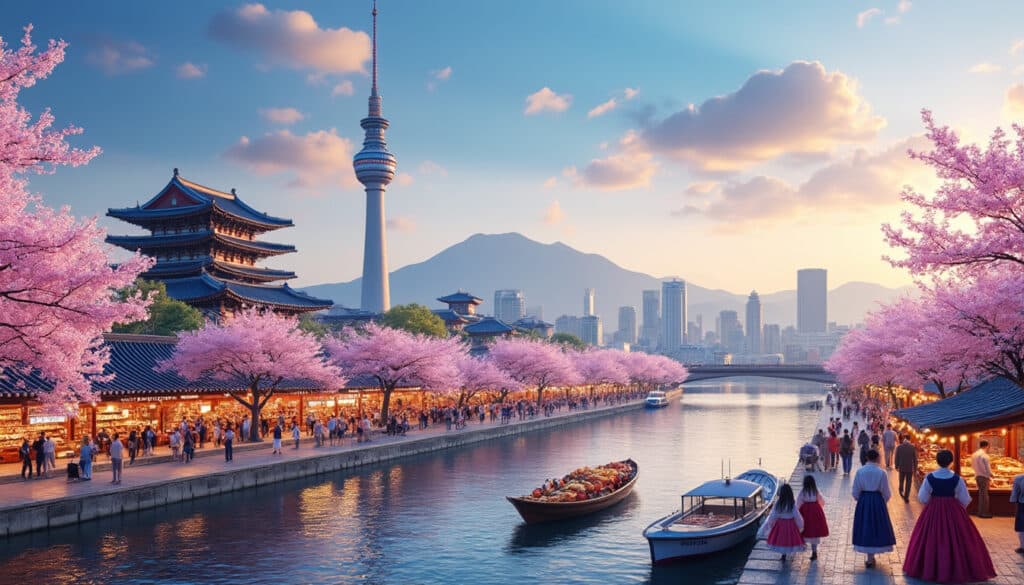
Fun Facts & Curiosities About Seoul
Seoul, a dazzling fusion of modernity and tradition, captivates every visitor with its vibrant blend of history, culture, and innovation. From being a technological metropolis to a cultural capital, the city offers a myriad of interesting facets waiting to be…
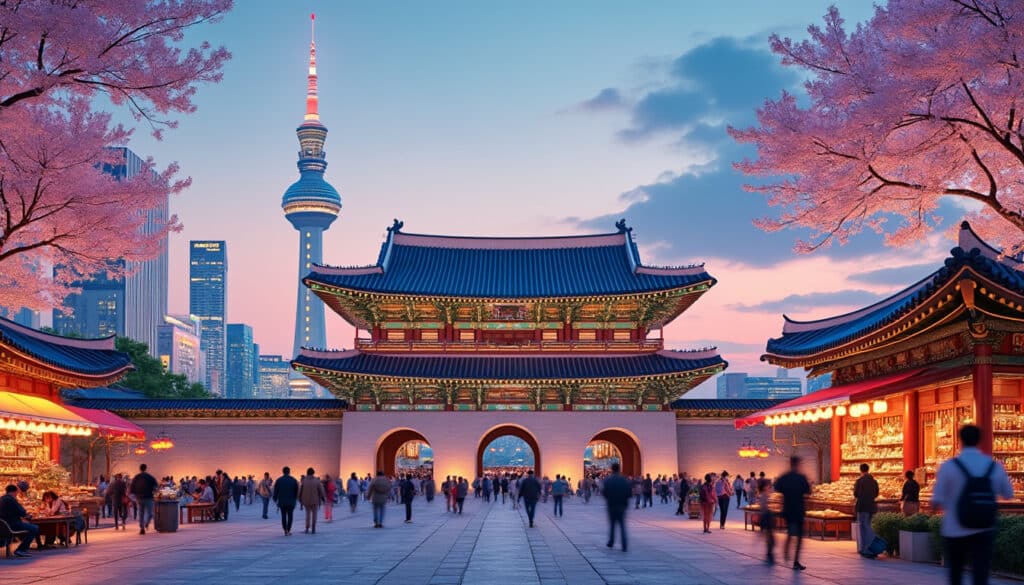
Architecture and urban features of Seoul
Seoul, South Korea’s vibrant capital, stands as a dynamic fusion of traditional culture and modern innovation. The city’s architectural wonders are a testament to its rich history and cutting-edge design principles, weaving a tapestry where ancient palaces coexist with towering…
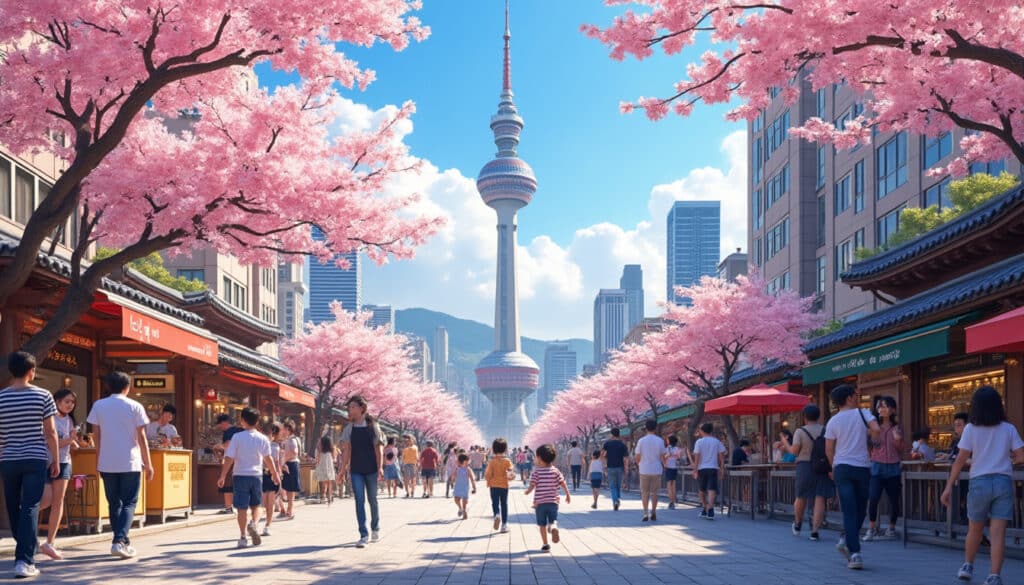
Seoul is a bustling metropolis where the ancient and modern coexist harmoniously. From its rich history rooted in time-honored traditions to its vibrant nightlife and technological advancements, this city is a haven for both tourists and expats. Stepping into Seoul…

Demographics and geography of Seoul
Seoul, the vibrant capital of South Korea, stands as a testament to the country’s rapid development and cultural evolution. Nestled along the banks of the Han River in the northwestern corridor of the Penninsula, Seoul represents a harmonious blend of…
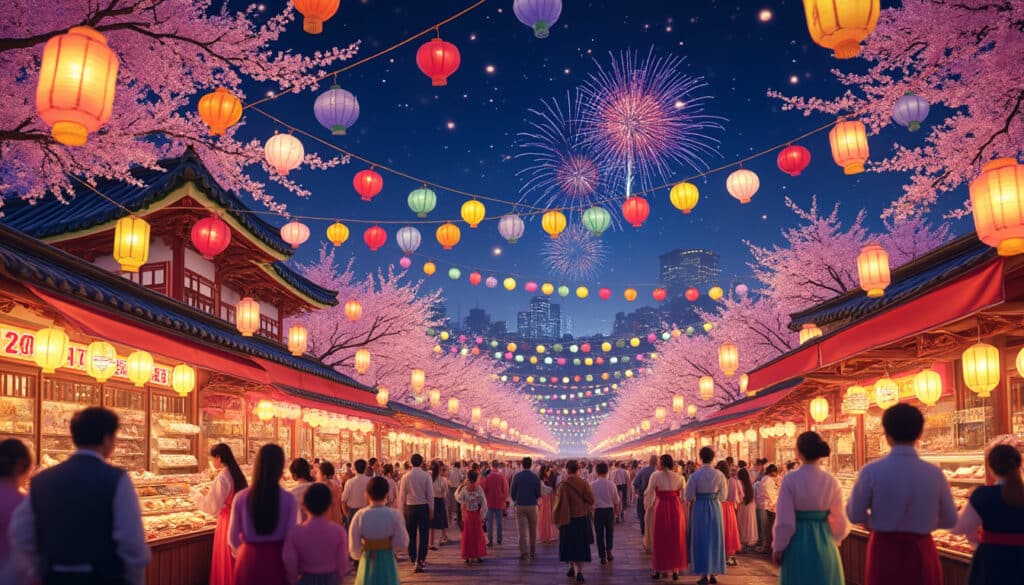
Holidays and celebrations in Seoul
Seoul, the heart of South Korea, is where traditions meet modernity, creating a unique tapestry of cultural and contemporary celebrations. The city, known for its vibrant lifestyle and rich history, transforms into a festive wonderland during public holidays. From historical…
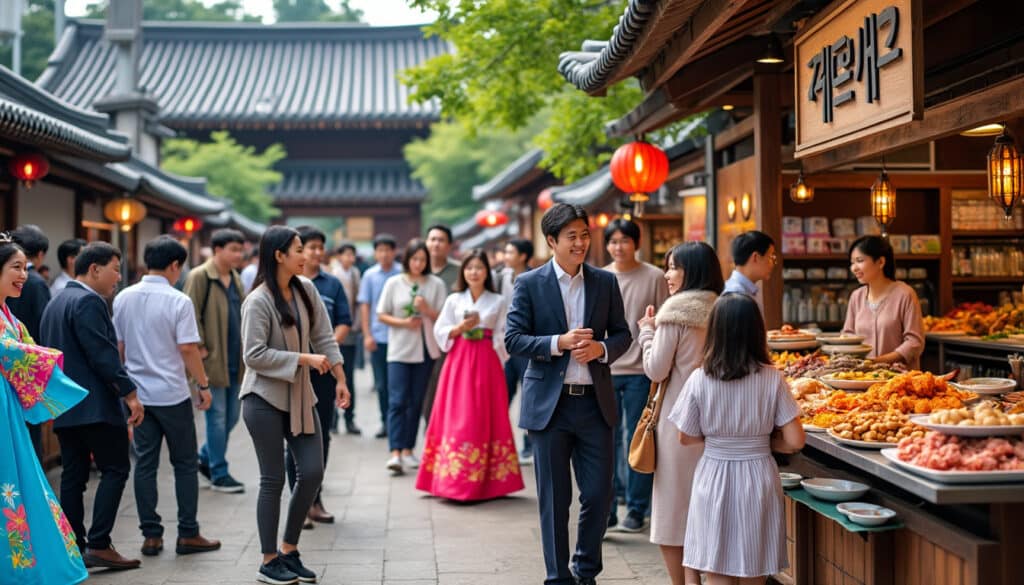
Local tips for tourists in Seoul
Seoul, the vibrant capital of South Korea, offers a fusion of ultra-modern skyscrapers and ancient palaces, bustling markets, and serene temples. However, while embarking on a journey to this dynamic metropolis, tourists often miss the oddly charming, unconventional spots that…
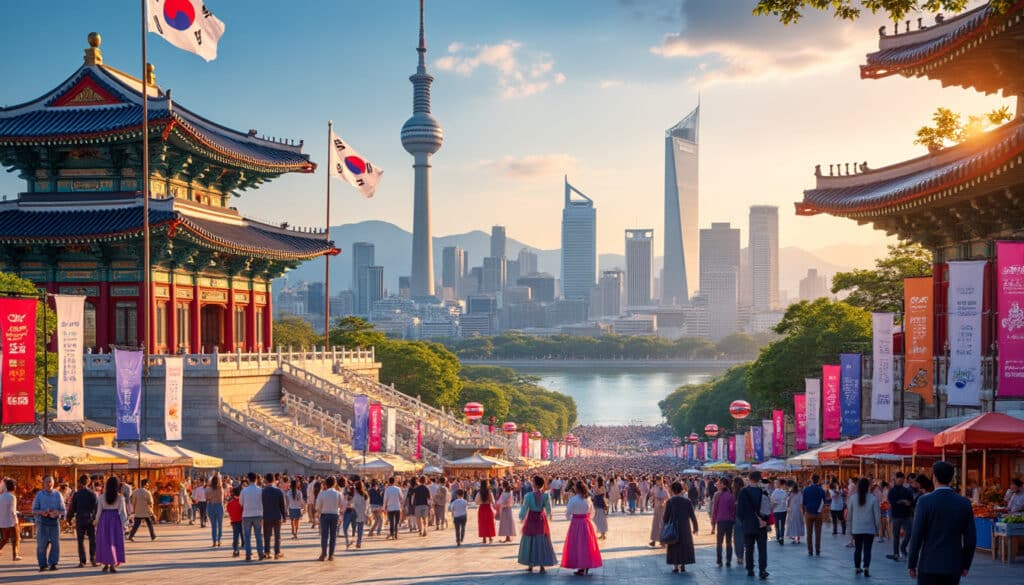
Names, flags, and identity of Seoul
Seoul, a dazzling city that serves as the heart of South Korea, has more to offer than its bustling streets, futuristic skyscrapers, and vibrant culture. Its essence is interwoven with the intriguing tapestry of its names, symbols, and identity. The…

Reputation and identity of Seoul
Seoul, the pulsating heart of South Korea, is a city that gracefully bridges the gap between the past and the future. Known for its towering skyscrapers, neon-lit streets, and a burgeoning tech industry alongside historic palaces, tranquil temples, and bustling…
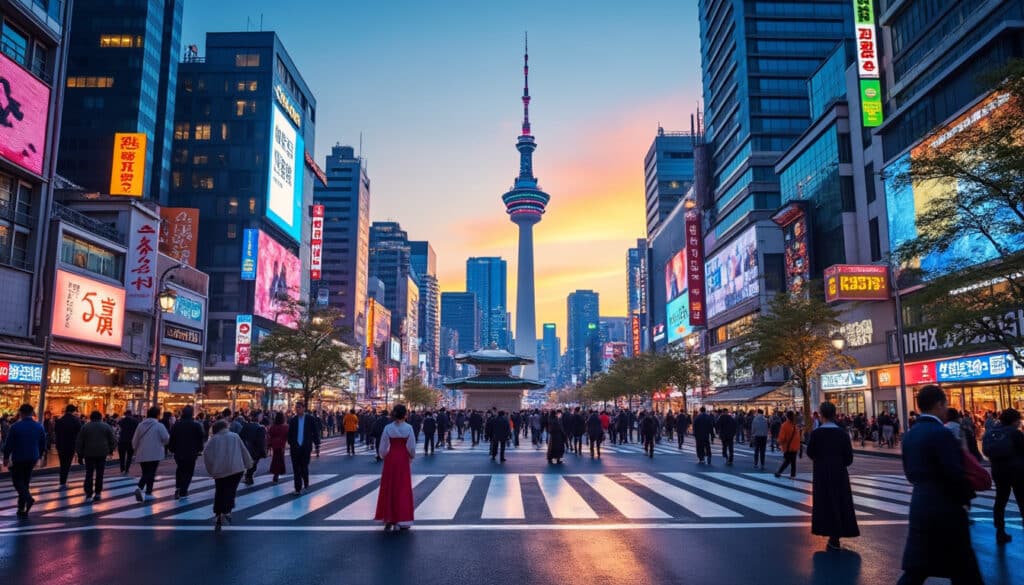
Seoul, a sprawling city that seldom sleeps, is a vibrant blend of tradition and modernity, pulsing with energy around the clock. Understanding time in this bustling metropolis is crucial for both residents and visitors, not only for practical planning but…
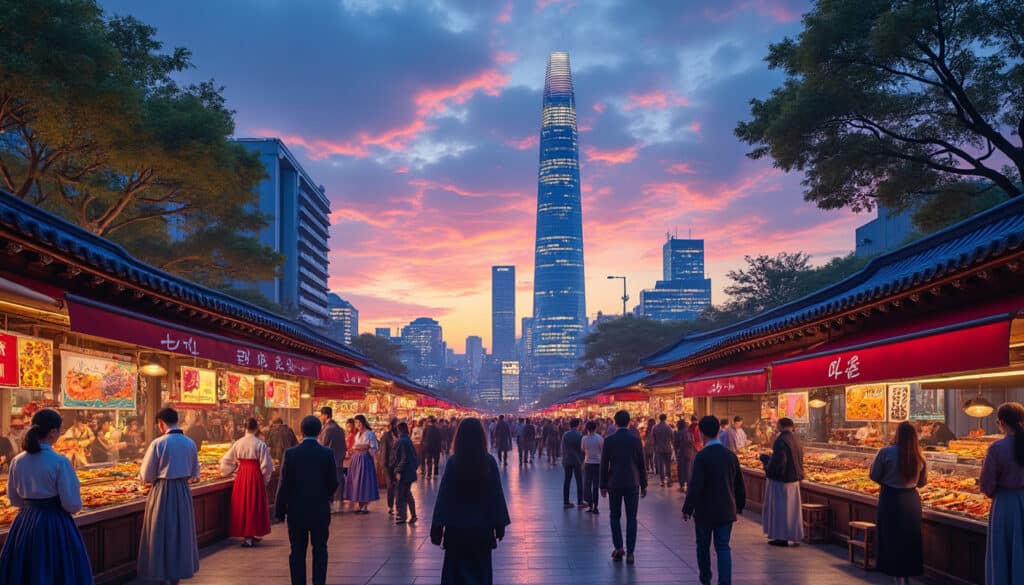
Unusual facts and social issues in Seoul
Seoul, a dazzling tapestry of ancient history and contemporary vibrance, offers explorers an eclectic mix of the unexpected and the familiar. As a hub of innovation with deep cultural roots, Seoul embodies a fascinating blend of contrasts that draw millions…
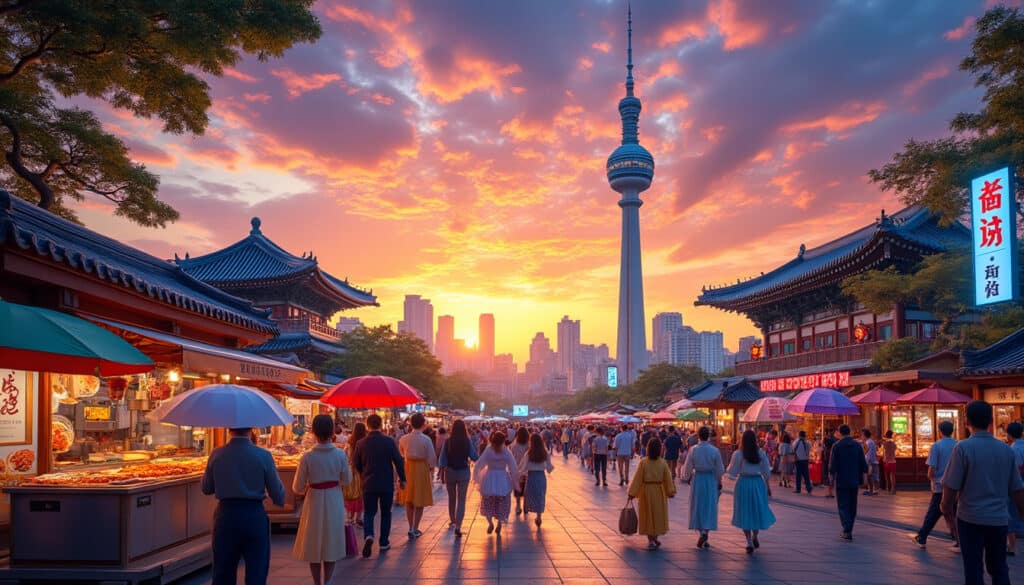
What does Seoul look, smell, feel like?
Seoul, South Korea’s sprawling metropolis, is a city that engages all the senses. As you navigate its bustling streets, you’re enveloped by a panorama of contrasting elements: sleek skyscrapers shoot up next to ancient palaces, neon-lit alleyways buzz with life…

